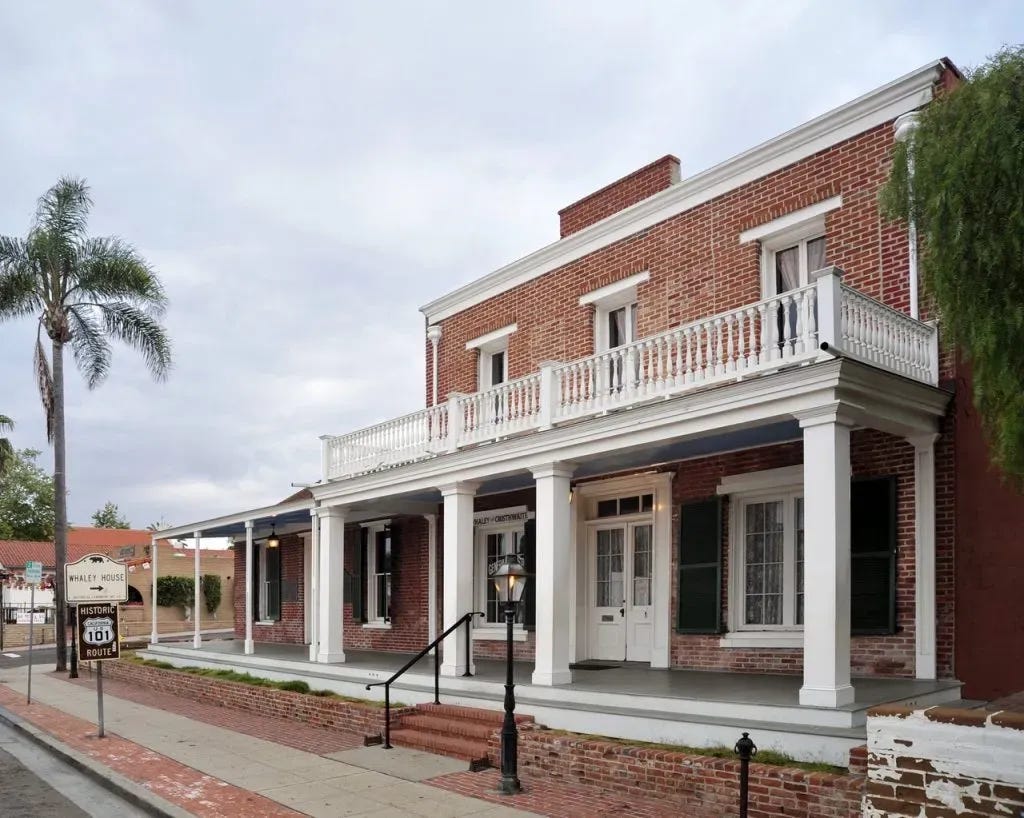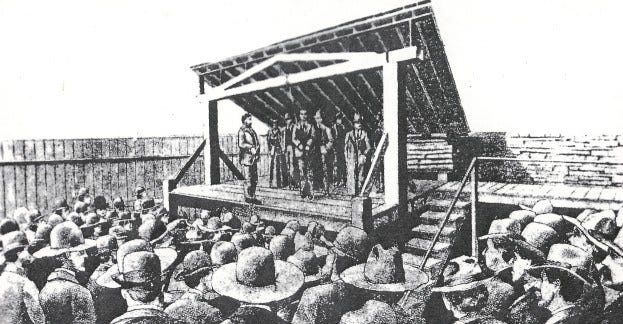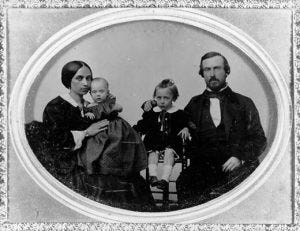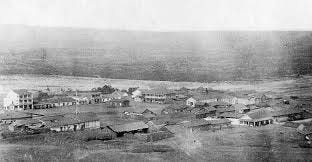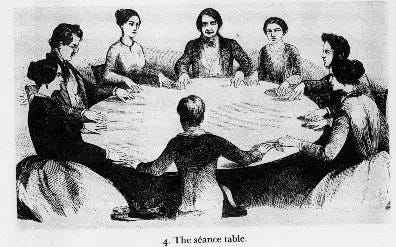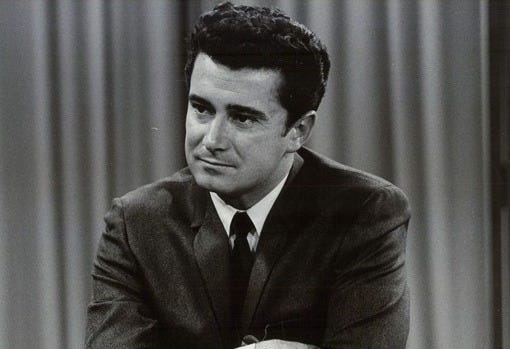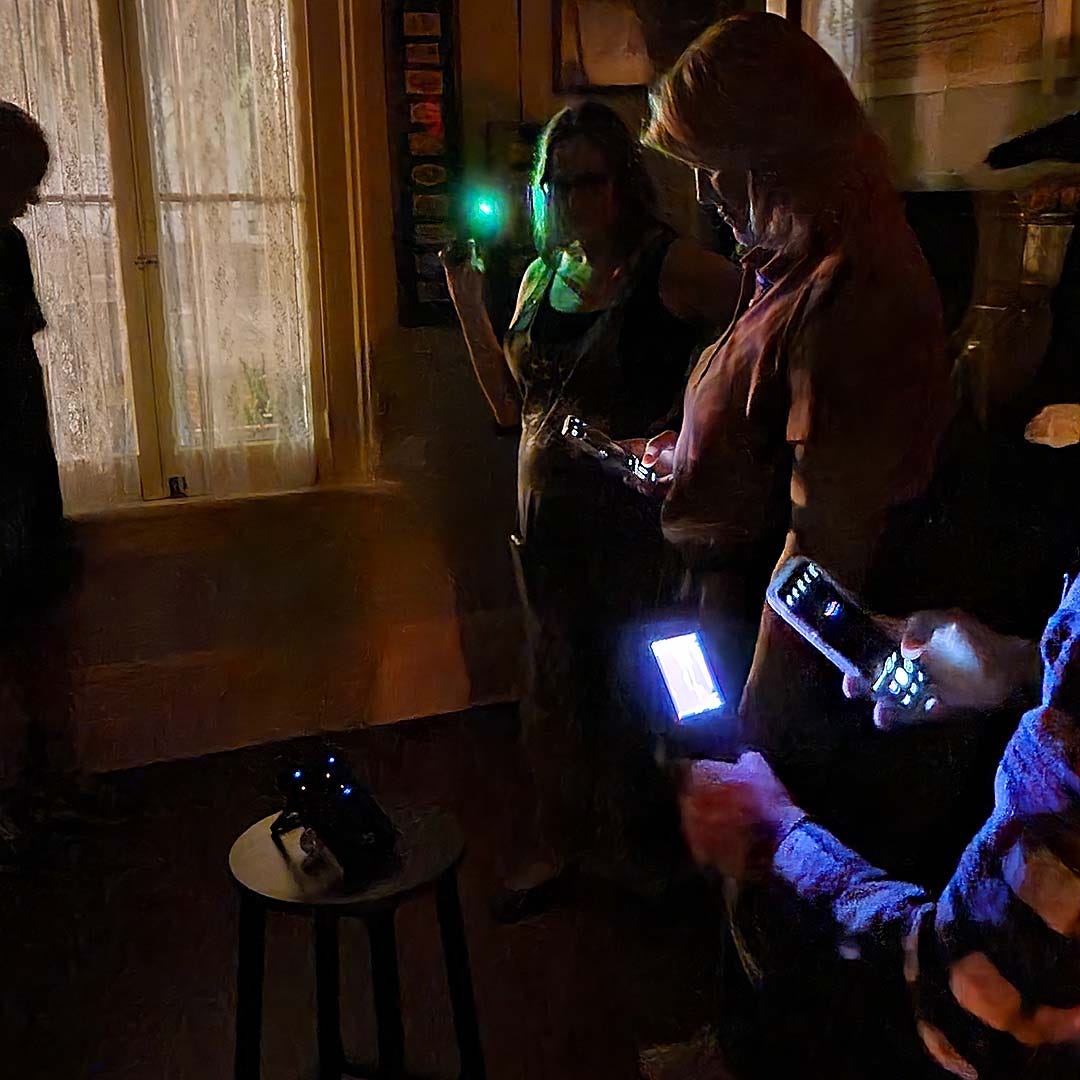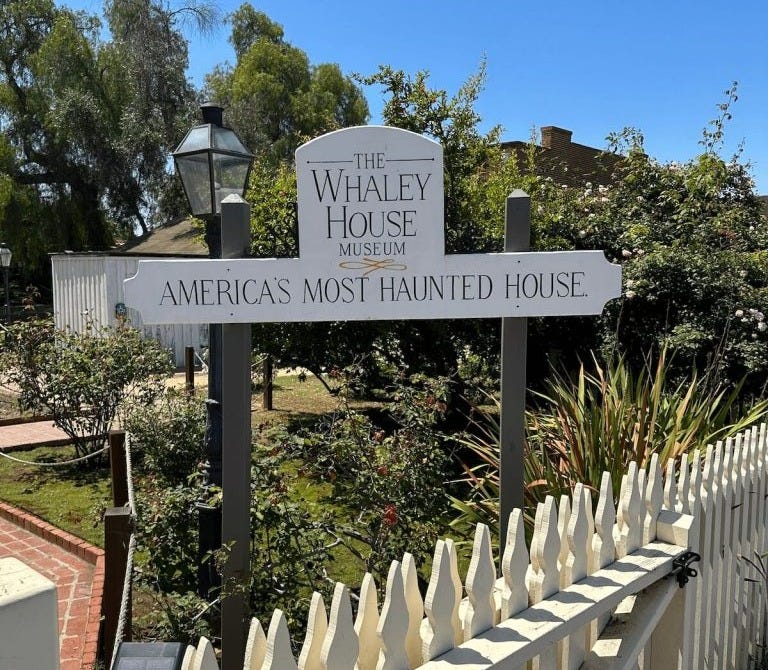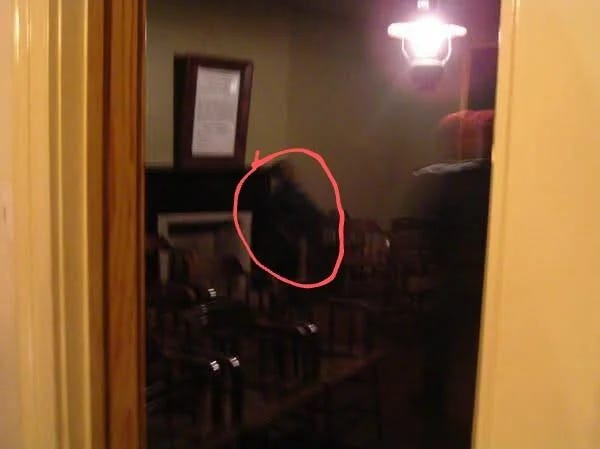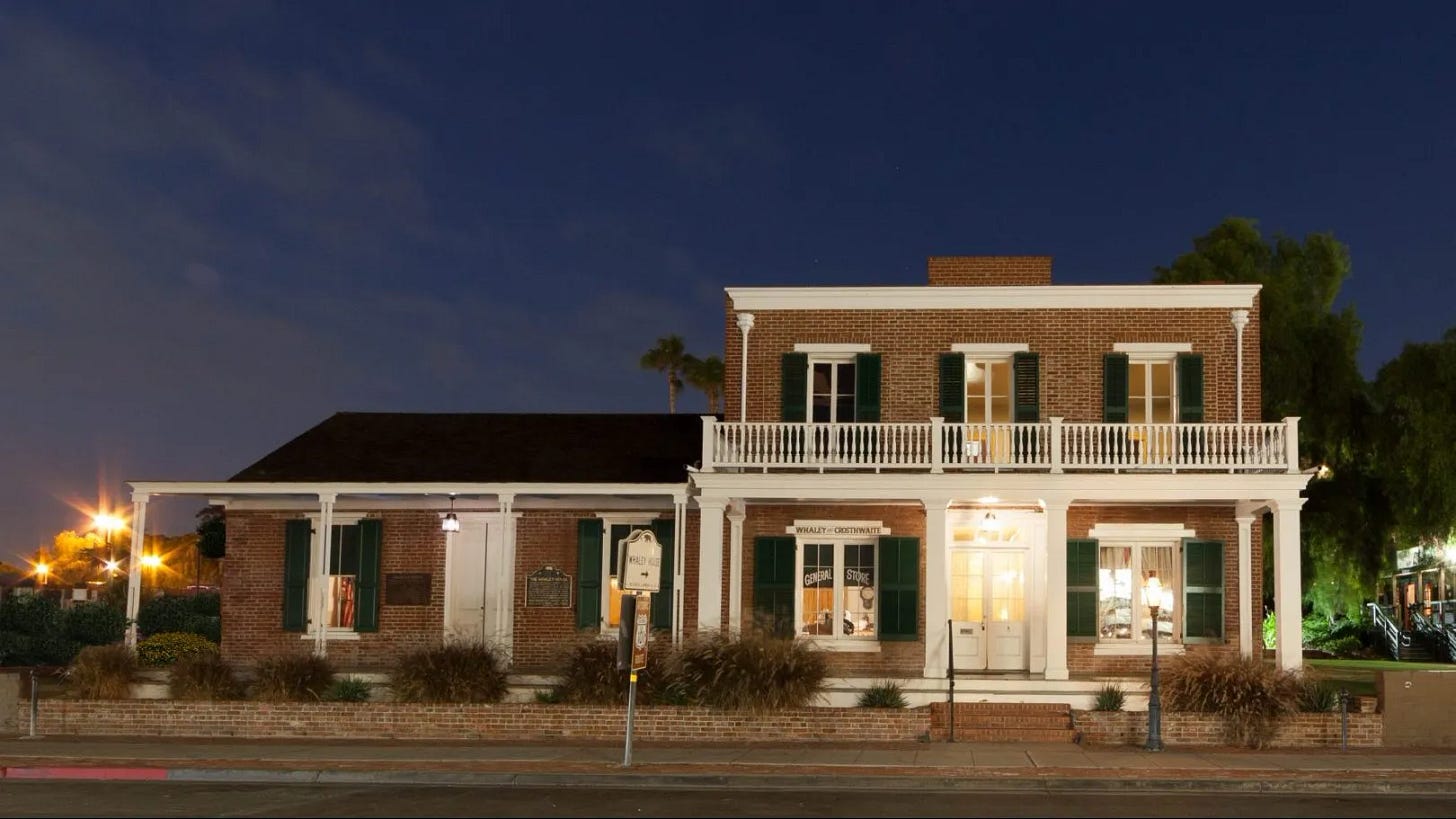"America's Most Haunted House?" A Skeptic's Guide to the Ghosts of the Whaley House
It was a home built on a gallows, cursed by tragedy, and certified “haunted” by the U.S. government. But is the story real? We dig into the history, the hauntings, and the science behind the legend.
Some buildings have two stories. There’s the one you can read on a bronze plaque—a story of bricks, dates, and historical significance. Then, there’s the second story, the one told after dark in hushed tones. A story of whispers, shadows, and grief that never quite fades. Few places embody this duality like the Whaley House in Old Town, San Diego.
By any official measure, the house is a treasure. It’s California Historical Landmark #65, the first two-story brick building in Southern California, an elegant 1857 Greek Revival that once served as the county courthouse, a general store, and the town’s first commercial theater. It was the sophisticated dream of an ambitious pioneer family, a beacon of progress on the dusty frontier.
But that’s only the first story. The US Department of Commerce itself officially designated it “haunted” in the 1960s, and today, its owners have literally trademarked its reputation as “America’s Most Haunted House®." Every year, tens of thousands of visitors walk its halls, not just to see the 19th-century history, but hoping to experience the second story for themselves.
So, how does this happen? How does a family home, a place of life and ambition, become such a nexus for the paranormal? The legend of the Whaley House isn’t a simple campfire tale. It’s a story that grew layer by tragic layer, starting not with a ghost, but with a gallows. This house was knowingly built on land used for public executions. The first paranormal event was reported by the Whaleys themselves, who claimed to hear the phantom footsteps of James “Yankee Jim” Robinson, a man hanged on their property years before they even broke ground.
That was just the beginning. The house would soon be filled with the family’s own profound sorrow - the death of their infant son, Thomas Jr., within its walls, and later, the devastating suicide of their 22-year-old daughter, Violet. Each tragedy became a new chapter in the haunting, a new spirit added to the cast.
To understand the ghosts of the Whaley House, you have to understand the family’s pain and the strange cultural currents that allowed them to interpret their loss as something supernatural. This is a story of how private grief becomes public lore. So, let’s step across the threshold and listen to what the house has to say.
The Legend & Lore: A Cast of Ghosts
Unlike most hauntings that spring from a single, violent event, the legend of the Whaley House is more like a play where the cast of ghosts assembled over decades. Each new act in the family’s life, particularly the tragedies, left another soul lingering on the stage. But the first character in this drama wasn’t a Whaley at all. He was the man they say cursed the land itself.
His name was James Robinson, better known as “Yankee Jim.” In 1852, he was convicted of grand larceny for stealing a rowboat and was sentenced to hang. The gallows were set up on a desolate patch of land, and Thomas Whaley himself was among the townsfolk who watched the execution. It was a grim, botched affair. Because the gallows were set too low for a man of Jim’s considerable height, he wasn’t killed instantly; he was slowly strangled, his feet scraping the ground for an agonizingly long time.
Five years later, when the Whaleys moved into their grand new brick home, built on that very spot, they almost immediately began hearing heavy, stomping footsteps moving through the house. They were certain they knew who it was. From the very beginning, they attributed the sounds to the restless, angry spirits of Yankee Jim. He was the house’s original ghost, the foundational curse.
But soon, the family’s own sorrows would begin to populate the house with spirits of their own.
The Patriarch & Matriarch (Thomas & Anne Whaley): The heads of the household are said to remain in charge, even in the afterlife. Thomas Whaley, the ambitious builder of the home, is often reportedly seen as a dignified apparition on the upper landing, dressed in his typical frock coat and pantaloons. His presence is also sometimes announced by the phantom scent of his cigar smoke. Anne Whaley, the matriarch who endured so much within the home and died there in 1913, is also a prominent figure. Her spirit is allegedly seen in the downstairs rooms or tending to her garden, with her presence often marked by the pleasant, spectral smell of lavender perfume or fresh-baked bread.
The Children (Thomas Jr. & Violet): The most heartbreaking layers of the legend come from the children. In 1858, the Whaleys’ son, Thomas Jr., died of scarlet fever in an upstairs room at just 18 months old. Ever since, visitors and staff have reported the disembodied sounds of a baby crying or, more cheerfully, the giggling and running footsteps of a small child playing in the halls. The house’s most famous and tragic spirit, however, is that of their daughter, Viloet. In 1885, after a brief and humiliating sham marriage to a con man who abandoned her, a depressed and distraught 22-year-old Violet took her father’s pistol and died by suicide in an upstairs bedroom. Her presence is the one most acutely felt by visitors, often reported as an apparition of a sad young woman in a long dress, accompanied by overwhelming feelings of sorrow and sudden, intense cold spots.
The Family Pet (Dolly the Dog): In a strangely charming addition to the lore, even the family’s fox terrier, Dolly, is said to have stuck around. Her small, fluffy apparition is sometimes seen, often by visiting children, trotting through the upstairs hallway before vanishing.
These stories of loss, violence, and enduring family ties form the very soul of the Whaley House legend. They are the spirits visitors come seeking. But to understand why these stories took such powerful root, we need to look beyond the house itself and into the world in which the Whaleys lived and grieved.
Historical Context: A House of Sorrow & Spiritualism
The ghosts of the Whaley House weren’t born in a vacuum. They were born from the unique and brutal realities of the American frontier, and interpreted through one of the strangest and most powerful cultural movements of the 19th century. To understand the haunting, you have to understand the world the Whaleys lived in.
When Thomas Whaley built his home in 1857, Old Town San Diego was little more than a dusty, rugged frontier outpost. His two-story brick mansion, built for the then-staggering sum of over $10,000, was a declaration of progress and East Coast sophistication in a town of modest adobes. Whaley himself boasted it was “the handsomest, most comfortable and convenient place in town or within 150 miles.” Crucially, it wasn’t just a home. It was the pulsing heart of the community, serving as the general store, the county courthouse, and the first commercial theater in the area. This public function is key. It meant the Whaley family’s triumphs and, more importantly, their tragedies, were essentially community events, embedding their personal story into the town’s collective memory from the very beginning.
But the environment alone didn’t create the ghosts. The Whaleys’ interpretation of the events in their home was shaped by the dominant cultural craze of their time: American Spiritualism. Originating in 1848 with the Fox sisters in New York, Spiritualism swept the nation with a radical and comforting proposal; the dead could communicate with the living. It was especially appealing because it presented itself not as old-fashioned faith, but as a “scientific religion.” In an age of new technology, Spiritualists used the telegraph as a metaphor for their “spiritual telegraph” to the afterlife. For a society grappling with immense loss, especially after the Civil War, Spiritualism offered a structured way to process grief, reframing death as a mere transition.
For an educated, contemporary family like the Whaleys, this was the cultural lens through which they saw the world. So when they heard those heavy, inexplicable footsteps, they didn’t just note an odd noise. They interpreted it through the Spiritualist framework and attributed it to Yankee Jim’s restless spirit. This was the birth of the legend. Likewise, the profound grief following the death of Thomas Jr. and the suicide of Violet aligned perfectly with the narrative of spirits bound by tragedy. The sounds and feelings in the house weren’t just creaks and drafts; they were communication from the departed.
For decades, these stories remained largely private sorrows, the family’s own way of coping. The legend’s leap from private lore to public commodity happened in two key stages. The first was in 1909, when son Francis Whaley began restoring the dilapidated house and operated it as a tourist attraction, telling stories of its history. The second, and most pivotal, stage came in 1960 when the house was formally opened as a public museum. This act institutionalized the legends, transforming them from family folklore into an official history presented to thousands of visitors each year.
A History of Encounters: From the Family to Ghost Hunters
The ghostly tales of the Whaley House didn’t die with the family. In fact, that’s when they truly began to flourish. The reports didn’t just continue; they grew, evolved, and were amplified by new voices, celebrity encounters, and changing technology.
The First Witnesses
The most credible report, the one that anchors the entire legend, comes from the original occupants. It was Thomas and Anne Whaley themselves who first reported hearing the heavy, disembodied footsteps of “Yankee Jim” Robinson almost immediately after moving in. They established the haunting from its inception, providing a powerful source that grounds the story in the family’s own experience.
The Mid-Century Boom
For a century, the stories remained mostly local lore. That all changed in the 1960s. After the house opened as a museum, its reputation exploded onto the national stage, thanks in large part to two key events.
First, in 1964, a young television personality named Regis Philbin hosted a show from inside the house, intending to debunk the legends. He left a changed man. Philbin later claimed to have a genuine paranormal experience, seeing a “filmy white” apparition that he was convinced was the spirit of Anne Whaley. Broadcast to a massive audience, this celebrity endorsement was a pivotal moment, lending a new and exciting credibility to the haunting.
Shortly after, the most famous paranormal investigators of the era, Hans Holzer and medium Sybil Leek, conducted their own investigation. Their visit, detailed in Holzer’s popular books, was a sensation. Leek claimed to make contact with several spirits, and Holzer famously left with a stark conclusion, declaring the site “one of the most actively haunted mansions in the world.” Within the paranormal community, this was a definitive judgment from the highest authority.
The Modern Experience
The legend continues to evolve in the 21st century. The house is now a frequent stop for modern paranormal reality shows like Ghost Adventures, where investigators trade seances for digital recorders and infrared cameras. These teams claim to have captured a new kind of evidence: Electronic Voice Phenomena (EVPs), or disembodied voices on audio recordings, adding a technological layer to the lore.
Yet, the most compelling modern accounts often come from everyday visitors. Blogs and forums are filled with personal paranormal stories, from feeling a sudden, inexplicable sorrow in Violet’s room to seeing curtains move on their own. One of the most enduring and persistent modern claims is the sighting of a small, fluffy dog - believed to be the family’s terrier, Dolly - scampering down an upstairs hallway before vanishing into thin air.
For over 160 years, the reports have been remarkably consistent. A man’s heavy footsteps. A woman’s perfume. A child’s cry. But does this consistency prove the haunting, or does it prove the power of a story well told? Now, we have to ask the tough questions and investigate the mundane.
Investigating the Mundane
Alright, we’ve laid out the chilling history and the ghostly encounters. But as any good researcher knows, you have to kick the tires. It’s important to state upfront that the Whaley House has never undergone a formal, controlled investigation by a major scientific skeptical organization like the Committee for Skeptical Inquiry (CSI). The “evidence” we have is anecdotal, not empirical. So, before we declare the house haunted, we have to consider the alternative explanations - the psychological, environmental, and folkloric factors that could create a perfect storm of perceived paranormal activity.
Psychological Factors: The Power of Suggestion
You don’t just walk into the Whaley House; you walk into a story you’ve already been told. The building is officially and actively branded as “America’s Most Haunted House,” a title it has promoted since the 1960s. Visitors are often on “ghost tours” where guides point out specific “hotspots” and recount the tragic legends associated with them. This creates a potent psychological state called priming. You arrive expecting ghosts.
According to paranormal researchers and psychologists, this priming is critical. When your brain is told to expect something creepy or threatening, it actively scans the environment for evidence to confirm that expectation. This creates a feedback loop:
A tour guide tells you the scent of lavender is Anne Whaley’s ghost.
You encounter an ambiguous stimulus - a draft from an old window carrying a floral scent from the nearby garden.
Your primed brain interprets this not as a draft, but as a paranormal encounter with Mrs. Whaley.
You report your experience, which reinforces the legend for the next visitor.
This is also where pareidolia comes in - our brain’s innate tendency to see patterns, like faces or figures, in random visual data. A strange shadow in a dusty corner, a reflection in the old, wavy glass of a window - a primed mind can easily interpret these as an apparition.
Environmental Factors: The Ghost in the Machine
Many classic haunting phenomena have plausible physical explanations.
Noises: Old houses naturally produce a symphony of sounds. Wood and brick expand and contract with temperature changes, and floorboards creak under shifting weight, all of which can be mistaken for footsteps or knocks.
Cold Spots: In a large, 19th-century brick home with old windows, drafts, and natural convection currents can easily create pockets of cold air that a visitor would interpret as a paranormal “cold spot.”
The “Ghost Frequency”: Perhaps the most compelling theory is infrasound, low-frequency sound waves below the range of human hearing (under 20 Hz). Research has shown that these frequencies, generated by things like wind, traffic, or old ventilation systems, can have bizarre physiological effects. Because 19Hz is the resonant frequency of a human eyeball, it can cause vibrations that lead to blurred vision or the perception of fleeting, grey figures in your peripheral vision. Infrasound can also induce feelings of anxiety, dread, and pressure on the chest - sensations frequently reported in haunted locations. The 160-year-old Whaley House, located in a busy part of town, is a prime candidate for harboring such ambient sounds.
Folkloric Embellishment: The Story Gets Taller
Finally, we have to look at how the story itself has grown. The tale of “Yankee Jim” is a perfect example. Historical records are fuzzy on his actual crime - some say he stole a rowboat, others claim it was horse theft. Over time, this historical footnote has been transformed into a menacing folk villain whose violent end imbues the very soil with a curse—a much better foundation for a ghost story. We see this again with the alleged spirit of “Annabelle Washburn,” a childhood playmate of the Whaley children. Even paranormal-focused sources admit there is no historical record that this person ever existed. She is likely an urban legend that attached itself to the house, adding another layer of tragedy to the narrative.
So, is the haunting of the Whaley House just a perfect storm of psychological suggestion, environmental quirks, and a story that’s been polished over time? It’s a completely plausible explanation. And yet, it doesn’t quite account for everything. It doesn’t explain the sheer consistency of the reports across 160 years, long before the marketing and ghost tours. It doesn’t explain away the deep personal and sometimes frighteningly specific encounters people report. The skeptical view provides a logical map, but there are still territories on it marked “Here be dragons.”
The Enduring Mystery of the Whaley House
So, where does that leave us, standing on the threshold of America’s Most Haunted House? We’ve walked through its history, listened to the echoes of its tragedies, and examined the very fabric of its ghostly tales. We’re left with two compelling, competing narratives.
On one hand, we have a story steeped in authentic loss. A house knowingly built atop a place of execution. A family that endured the death of an infant son and the tragic suicide of a daughter within its walls. The paranormal accounts originate from the very people who knew the house best—the Whaleys themselves—and have been reported with remarkable consistency by thousands of people for over 160 years. For believers, this is a clear and powerful case for a residual haunting, a place where profound human sorrow has left a lasting stain on the environment.
On the other hand, we have a compelling case for a haunting that lives inside the human mind. We have the immense power of suggestion, fueled by decades of marketing that primes every visitor to expect a ghost. We have plausible scientific explanations, from the natural creaks of an old building to the disorienting physical effects of infrasound. And we have a legend whose details have been polished and embellished over time, as stories so often are.
In the end, maybe the true power of the Whaley House is that it’s both things at once. It’s a genuine historical landmark, preserved in time. And it’s also a perfect vessel for our collective grief, memory, and fascination with the unknown. It doesn’t just hold the story of the Whaley family; it holds a mirror up to every person who walks through its doors, reflecting back their own willingness to believe-or to doubt.
Is the Whaley House truly haunted? The answer probably isn’t found in a history book or a scientific journal. It’s found in the chill that runs down your spine in an empty room, in the flicker of movement you catch in the corner of your eye, and in the stories we tell ourselves in the dark.
The house keeps its secrets. The rest is up to you.
What do you think? For my paid subscribers, I'm dying to hear your theories in the comments below. Have you been to the Whaley House? Do you find the paranormal accounts or the psychological explanations more compelling?
For all my readers, the best way you can support our journey into the strange is by sharing this article with a friend who loves a good mystery. Every share helps our community grow. Thank you for coming along on this investigation!
References
AbeBooks. (n.d.). The Haunted Whaley House, Old Town, San Diego, California: A history and guide to the most haunted house in America. Golem Press.
American Folklore Society. (n.d.). Journal of American Folklore. Retrieved July 22, 2025, from https://americanfolkloresociety.org/journal/access-the-journal/
Austin Parks and Recreation Department. (n.d.). Spiritualism in the 19th Century. Retrieved July 22, 2025, from https://www.austintexas.gov/sites/default/files/files/Parks/OHenry/spiritualism.pdf
Bader, C. (2021, October 28). Why some people see ghosts but others never do. Psychology Today. https://www.psychologytoday.com/us/blog/out-of-the-ooze/202110/why-some-people-see-ghosts-but-others-never-do
Brown, D. (2023, October 26). Infrasound and paranormal activity: Are they connected? HowStuffWorks. https://science.howstuffworks.com/science-vs-myth/extrasensory-perceptions/infrasound-paranormal-activity.htm
Carleemcdot. (2007, September). Whaley House. Retrieved July 22, 2025, from http://www.carleemcdot.com/2007/09/whaley-house.html
Center for Folklore Studies. (n.d.). Journals. The Ohio State University. Retrieved July 22, 2025, from https://cfs.osu.edu/about/resources/journals
Committee for Skeptical Inquiry. (2024, July 15). In Wikipedia. https://en.wikipedia.org/wiki/Committee_for_Skeptical_Inquiry
Coolsandiegosights. (2023, September 5). Man hanged in San Diego for stealing rowboat. https://coolsandiegosights.com/2023/09/05/man-hanged-in-san-diego-for-stealing-rowboat/
Creepy Catalog. (2022, October 11). My first paranormal experience at the Whaley House. https://creepycatalog.com/my-first-paranormal-experience-at-the-whaley-house/
Explore. (n.d.). This legendary California home has a horrifying history. Retrieved July 22, 2025, from https://www.explore.com/1685826/america-haunted-spots-legendary-california-san-diego-home-whaley-house-horrifying-history/
French, C. C. (2021). The power of suggestion. In E. L. Davison (Ed.), Anomalistic psychology: Exploring paranormal belief and experience (pp. 87–112). Esoterica Press.
Furzer, S. (1960, April 1). Images from the Whaley House. The Journal of San Diego History, 6(2). https://sandiegohistory.org/journal/1960/april/images-4/
Ghost City Tours. (n.d.-a). San Diego's most infamous ghosts. Retrieved July 22, 2025, from https://ghostcitytours.com/san-diego/famous-ghosts
Ghost City Tours. (n.d.-b). The haunted Whaley House. Retrieved July 22, 2025, from https://ghostcitytours.com/san-diego/haunted-san-diego/haunted-whaley-house/
Ghosts & Gravestones. (n.d.-a). San Diego's most infamous ghosts. Retrieved July 22, 2025, from https://www.ghostsandgravestones.com/san-diego/famous-ghosts
Ghosts & Gravestones. (n.d.-b). Whaley House. Retrieved July 22, 2025, from https://www.ghostsandgravestones.com/san-diego/whaley-house
Girlvetica. (2017, October 16). Whaley House: America's most haunted home. https://www.girlvetica.com/home/2017/10/16/the-whaley-house
Glass, D. (n.d.). History and mystery of the Whaley House: Old Town, San Diego. Goodreads. Retrieved July 22, 2025, from https://www.goodreads.com/book/show/34409440-history-and-mystery-of-the-whaley-house
Go Visit San Diego. (n.d.). What makes the Whaley House Museum the spookiest in San Diego? Retrieved July 22, 2025, from https://www.govisitsandiego.com/things-to-do/museums/san-diego-area-museums/whaley-house-museum/
Great Big Story. (2016, October 27). The ghost debunker [Video]. YouTube.
HauntedHouses.com. (n.d.). The Whaley House. Retrieved July 22, 2025, from http://hauntedhouses.com/california/the-whaley-house/
Higgs Centre for Theoretical Physics. (2021). The haunted frequency. The University of Edinburgh. https://higgs.ph.ed.ac.uk/outreach/higgshalloween-2021/haunted-frequency
Historic American Buildings Survey. (n.d.). Whaley House, 2482 San Diego Avenue, San Diego, San Diego County, CA. Library of Congress. Retrieved July 22, 2025, from https://www.loc.gov/item/ca0615/
History is Now. (2021, October 18). The rise of spiritualism in 19th century America. http://www.historyisnowmagazine.com/blog/2021/10/18/the-rise-of-spiritualism-in-19th-century-america
Holzer, H. (1997). Ghosts: True encounters with the world beyond. Black Dog & Leventhal.
Hyaena Gallery. (n.d.). Haunted Whaley House II: A history and paranormal guide. Retrieved July 22, 2025, from https://hyaenagallery.bigcartel.com/product/haunted-whaley-house-ii-a-history-and-paranormal-guide-to-america-s-most-haunted-house
Indiana University Bloomington. (n.d.). Journal of Folklore Research. Retrieved July 22, 2025, from https://scholarworks.iu.edu/journals/index.php/jfr
James Randi. (2025, July 19). In Wikipedia. https://en.wikipedia.org/wiki/James_Randi
Joe Nickell. (n.d.-a). In Wikipedia. Retrieved July 22, 2025, from https://en.wikipedia.org/wiki/Joe_Nickell
Joe Nickell. (n.d.-b). What people are saying about Joe Nickell & his work. Retrieved July 22, 2025, from https://www.joenickell.com/whatpeople.html
Journal of Folklore Research. (2024, March 2). In Wikipedia. https://en.wikipedia.org/wiki/Journal_of_Folklore_Research
La Jolla Mom. (n.d.). Whaley House Museum: Hauntings, highlights, & tips. Retrieved July 22, 2025, from https://lajollamom.com/whaley-house-museum-san-diego/
Laythe, B., Houran, J., Dagnall, N., & O'Keeffe, C. (2022). Haunted People Syndrome, conceptual framework and clinical case study. EXPLORE, 18(4), 450–459. https://doi.org/10.1016/j.explore.2021.06.003
Legg, R. (1960, April 1). The Whaley House. The Journal of San Diego History, 6(2). https://sandiegohistory.org/journal/1960/april/whaley/
Lorin Morgan-Richards. (2022, May 18). Lorin Morgan-Richards presents Biographies of the West episode 17: The Yankee Jim Robinson story [Video]. YouTube.
Marshall, D. (2001). A convocation of souls at the Whaley House. SOHO Reflections. Save Our Heritage Organisation. https://www.sohosandiego.org/reflections/2001-2/convocation.htm
Medium. (2018, October 29). The Whaley House Museum (Part 1 of Hidden San Diego adventures). https://medium.com/@chelseawightman/the-whaley-house-museum-part-1-of-hidden-san-diego-adventures-3de94b7276d5
Nickell, J. (2012, September 1). The science of ghosts. Center for Inquiry. https://centerforinquiry.org/blog/the_science_of_ghosts/
NPI. (n.d.). Haunted places: The Whaley House. Retrieved July 22, 2025, from https://npiweb.com/blog/posts/haunted-places-the-whaley-house/
North Georgia Group. (n.d.). Randi Whaley. Retrieved July 22, 2025, from https://www.northgeorgiagroup.com/team/randi-whaley
Perplexity. (n.d.). The ghost frequency. Retrieved July 22, 2025, from https://www.perplexity.ai/page/the-ghost-frequency-Tlwi8n_sQbqo1QjTJp16Tw
Quora. (n.d.). What are some possible explanations for a building or structure becoming haunted? Retrieved July 22, 2025, from https://www.quora.com/What-are-some-possible-explanations-for-a-building-or-structure-becoming-haunted-Could-it-be-related-to-the-previous-occupants-or-something-else-entirely
Radford, B. (2014). The ‘America’s most haunted’ myth. Skeptical Inquirer, 38(1).
Reddit. (2018). My Whaley House experience. r/Ghosts. https://www.reddit.com/r/Ghosts/comments/9s35e6/my_whaley_house_experience/
Reddit. (2022). Is the Whaley House really haunted? r/sandiego. https://www.reddit.com/r/sandiego/comments/xl4brg/is_the_whaley_house_really_haunted/
Ricky's Historical Tidbits. (n.d.). The hanging of Yankee Jim: A case of mistaken identity. Retrieved July 22, 2025, from https://www.rickyshistoricaltidbits.com/articles/the-hanging-of-yankee-jim-a-case-of-mistaken-identity
San Diego County Parks and Recreation. (n.d.). Whaley House. Retrieved July 22, 2025, from https://www.sdparks.org/content/sdparks/en/park-pages/WhaleyHouse.html
San Diego Ghost Tours. (n.d.). The Whaley House. Retrieved July 22, 2025, from https://sdghosts.com/the-whaley-house/
San Diego History Center. (n.d.-a). Biography of Thomas Whaley (1823-1890). Retrieved July 22, 2025, from https://sandiegohistory.org/archives/biographysubject/whaley/
San Diego History Center. (n.d.-b). The Whaley House. Retrieved July 22, 2025, from https://sandiegohistory.org/journal/1960/april/whaley/
San Diego Museum Council. (n.d.). Whaley House Museum. Retrieved July 22, 2025, from https://sandiegomuseumcouncil.org/museums/whaley-house-museum/
San Diego Tourism Authority. (n.d.). Whaley House Museum. Retrieved July 22, 2025, from https://www.sandiego.org/members/museums/whaley-house-museum.aspx
Save Our Heritage Organisation. (n.d.-a). Paper ghosts: The ephemeral legacy of the Thomas Whaley family. Retrieved July 22, 2025, from https://www.sohosandiego.org/enews/0124paperghost.htm
Save Our Heritage Organisation. (n.d.-b). Pioneer life: The Thomas Whaley family. Retrieved July 22, 2025, from https://www.sohosandiego.org/educators/images/lessonspioneerwhaleyfamily.pdf
Save Our Heritage Organisation. (n.d.-c). Whaley House happenings. Retrieved July 22, 2025, from https://www.sohosandiego.org/reflections/2001-2/whaleyhappenings.htm
Save Our Heritage Organisation. (2005). The ghosts at the Whaley House get all the publicity. https://www.sohosandiego.org/reflections/2005-4/ghosts.htm
Smith, A. P. (2019). Fortean folkloristics: The strange and the bizarre. Journal of American Folklore, 132(524), 127–145.
Spirit of Progress. (n.d.). San Francisco and Spiritualism in the 19th Century. Omeka. Retrieved July 22, 2025, from
https://spiritofprogress.omeka.net/
The Little House of Horrors. (n.d.). The Whaley House. Retrieved July 22, 2025, from https://thelittlehouseofhorrors.com/the-whaley-house/
The Reality Check. (2014, March 23). TRC #288: Interview with Joe Nickell + vaccines & autism + Ouija boards [Video]. YouTube.
Thomas Whaley. (2024, May 30). In Wikipedia. https://en.wikipedia.org/wiki/Thomas_Whaley
Travel Channel. (n.d.). The Whaley House. Ghost Adventures. Retrieved July 22, 2025, from https://www.travelchannel.com/shows/ghost-adventures/episodes/the-whaley-house
Trolley Tours. (n.d.). Whaley House. Retrieved July 22, 2025, from https://www.trolleytours.com/san-diego/whaley-house
US Ghost Adventures. (n.d.-a). Science of hauntings: Ghosts, spirits, and hauntings beginner's guide. Retrieved July 22, 2025, from https://usghostadventures.com/haunted-stories/science-of-hauntings-ghosts-spirits-and-hauntings-beginners-guide/
US Ghost Adventures. (n.d.-b). The Whaley House: Old Town's most haunted house. Retrieved July 22, 2025, from https://usghostadventures.com/americas-most-haunted-trending/the-whaley-house-old-towns-most-haunted-house/
Whaley House. (n.d.-a). #1 San Diego haunted house | Whaley House haunted night tour. Retrieved July 22, 2025, from https://www.whaleyhousesandiego.com/haunted-house-ghost-tour/
Whaley House. (n.d.-b). Meet our cast. Retrieved July 22, 2025, from https://www.whaleyhousesandiego.com/meet-our-cast/
Whaley House. (n.d.-c). Paranormal investigation. Retrieved July 22, 2025, from https://www.whaleyhousesandiego.com/san-diego-paranormal-ghost-hunting/
Whaley House. (n.d.-d). San Diego museums & landmarks | Historic Whaley House tours. Retrieved July 22, 2025, from https://www.whaleyhousesandiego.com/san-diego-museums-tours/
Whaley House. (n.d.-e). San Diego's most famous ghosts in town. Retrieved July 22, 2025, from https://www.whaleyhousesandiego.com/san-diegos-most-famous-ghosts-in-the-town/
Whaley House. (n.d.-f). Whaley House in Old Town San Diego | America's most haunted house®. Retrieved July 22, 2025, from
https://www.whaleyhousesandiego.com/
Whaley House (San Diego, California). (2024, July 21). In Wikipedia. https://en.wikipedia.org/wiki/Whaley_House_(San_Diego,_California
Whaley Historic House Museum. (n.d.). Home. Retrieved July 22, 2025, from
https://www.whaleyhouse.com/
Willard, S. (n.d.). Yankee Jim. Retrieved July 22, 2025, from http://www.authorstevewillard.com/Yankee-Jim.html
Wlodarski, R. J., & Wlodarski, A. P. (n.d.). The haunted Whaley House, Old Town, San Diego, California: A history and guide to the most haunted house in America. Goodreads. Retrieved July 22, 2025, from https://www.goodreads.com/book/show/1861829.The_Haunted_Whaley_House_Old_Town_San_Diego_California
Wlodarski, R., & Wlodarski, A. (n.d.). Haunted Whaley House II: A history and paranormal guide to America's most haunted house. Hyaena Gallery. Retrieved July 22, 2025, from https://hyaenagallery.bigcartel.com/product/haunted-whaley-house-ii-a-history-and-paranormal-guide-to-america-s-most-haunted-house
YouTube. (2018, October 28). The Whaley House in Old Town San Diego [Video].
YouTube. (2022, September 22). Exploring the "haunted" Whaley House and Old Town San Diego [Video].


